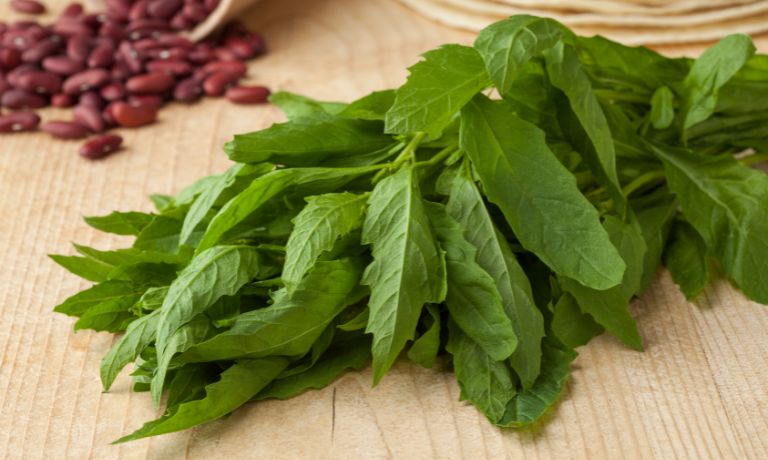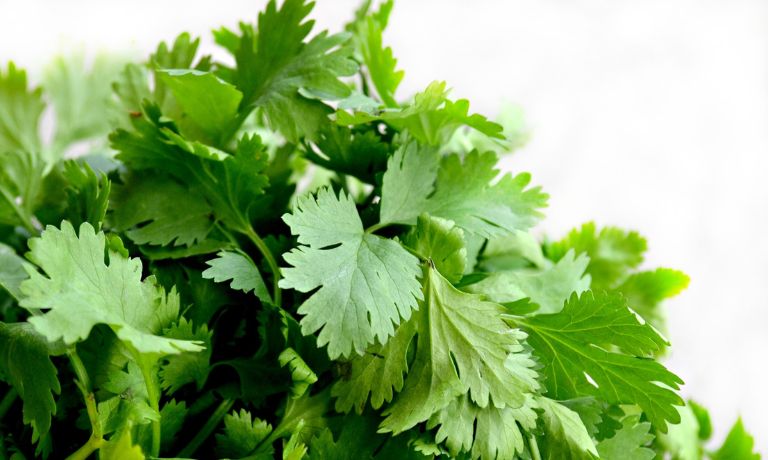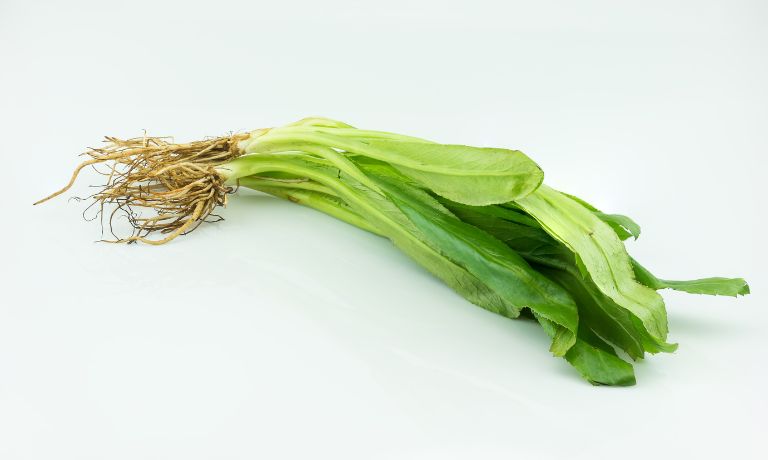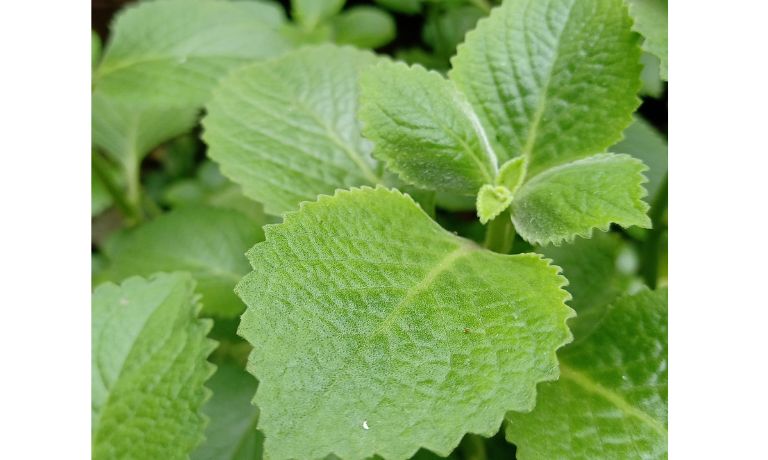Are you looking for a substitute for epazote to add flavor and complexity to your favorite recipes? If so, you’re in luck!
Several different herbs and spices can be used as an effective epazote replacement when cooking traditional Mexican dishes.
In this blog post, we’ll take a look at what kinds of ingredients make good substitutes, and how to incorporate them into specific recipes.
So keep reading if you’d like helpful tips on replacing Epazote with other flavorful alternatives!
What Is Epazote?
Epazote is a herb native to Mexico, and it has a distinctive grassy flavor with hints of lemon and mint.
It is used extensively in Mexican cuisine but also in other Latin American dishes.
Epazote can be used fresh or dried and is often added to bean dishes to reduce their gassiness and to tamales and soups.
It can also be used with herbs and spices to season meats, vegetables, and fish dishes.
Epazote has a slightly bitter taste that adds an interesting complexity when included in recipes.
In addition to its culinary uses, epazote is also believed to have medicinal properties when consumed in tea.
It is said to have anti-parasite and antispasmodic properties and calming effects on the digestive system.
Epazote should be used sparingly, as its flavor can be overpowering if too much is added.
When using it for cooking, it’s best to add it near the end of cooking time to preserve its flavor.

Substitutes For Epazote
Epazote is a unique and flavorful herb used in Mexican cuisine.
It can be difficult to find, however, so if you cannot get your hands on it, several options to will work just as well.
Cilantro
Cilantro, also known as Chinese parsley or coriander, is a herb native to the Mediterranean and Middle East.
It has a strong, pungent flavor can add a unique taste to dishes.
[display-posts id=”3120″ image_size=”thumbnail” posts_per_page=”1″]
Cilantro is a great substitute for Epazote as it offers many of the same benefits without having the same intensity of flavor.
It can add an earthy, herbal flavor to Mexican dishes such as tacos, enchiladas or burritos.
Additionally, it can be substituted for Epazote in stews and soups to give them a unique twist.
Cilantro is also known for its anti-inflammatory and antioxidant properties, making it a great choice for health-conscious individuals.

Culantro
Culantro (Eryngium foetidum), also known as Mexican coriander, is a herb native to Mexico and Central and South America.
It has been used for centuries in Latin American cooking and is gaining popularity outside the region.
Culantro looks similar to cilantro but has a stronger flavor with hints of anise.
Culantro’s flavor is more pungent than Epazote, but it is still quite flavorful and adds a unique twist to traditional Mexican dishes.
Plus, since Culantro is widely available in grocery stores across the United States, it makes an easy substitution for those who can’t find Epazote.

Fennel
Fennel, also known as Finocchio or Florence Fennel, is a plant belonging to the carrot family.
It has a crisp texture and sweet anise flavor, and its seeds are often used in cooking.
[display-posts id=”3109″ image_size=”thumbnail” posts_per_page=”1″]
Fennel can be eaten raw or cooked, chopped up in salads or roasted with other vegetables.
It can be used as a substitute for epazote in many recipes, due to its similar anise flavor and aroma.
The fennel leaves are particularly well-suited to replace epazote, as they have a milder flavor than the seeds.
Fennel also adds texture and crunch to recipes that call for epazote.
Additionally, fennel leaves are often easier to find in some areas than epazote, so many people use this herb as a substitute.

Papalo
Papalo, also known as Papaloquelite, is an aromatic herb native to Mexico and Central America.
It has a unique flavor and aroma that resembles a combination of cilantro, arugula, and lime.
The leaves are usually used in Mexican cuisine as a condiment or garnish for tacos, soups, salsas, and salads.
Papalo and epazote are used interchangeably in many recipes, but papalo has a stronger flavor profile that some prefer.
Additionally, the leaves of papalo last longer than epazote leaves as they tend to stay fresher longer.
Papalo can also be used as a medicinal herb to treat digestive disorders, reduce inflammation, and promote digestion.

Coriander
Coriander, also known as cilantro or Chinese parsley, is a herb related to the carrot family.
It has a distinctly citrusy and nutty flavor and aroma.
[display-posts id=”3077″ image_size=”thumbnail” posts_per_page=”1″]
Coriander leaves are used in salads, soups, desserts, curries, and salsas. The seeds of coriander can be used for cooking or in teas.
Coriander shares some of the same aromatic compounds as epazote, making it a good alternative for those who cannot find it in their local market.
Additionally, coriander is easier to find and more widely used than epazote.

Mexican Oregano
Mexican oregano is a type of herb often used in Mexican cuisine.
It has a herbal and slightly citrus flavor, with lemon verbena and marjoram notes.
It can season soups, stews, chili peppers, and fish dishes.
Mexican oregano is also known as Puerto Rican Oregano, Indian Borage, and Wild Marjoram.
Due to its citrusy flavor, Mexican Oregano can stand in for Epazote’s strong taste and smell when cooking traditional Mexican dishes.
It has many of the same flavor notes as Epazote without being quite as overpowering.
Mexican Oregano can be found in most grocery stores or online spice markets.

Italian Parsley
Italian Parsley is a type of flat-leaf parsley that is popularly used in Italian cooking.
It can be found in many grocery stores and health food stores worldwide.
[display-posts id=”3059″ image_size=”thumbnail” posts_per_page=”1″]
As a substitute for epazote, Italian parsley can bring earthy, herbal flavors to dishes without using epazote, which can be hard to find.
The herb can be used in the same way as epazote, either fresh or dry, and it can also be used in soups, sauces, salads, stews, and more.
It has a mild flavor similar to regular parsley but is still distinct enough to provide an interesting flavor profile.
Italian parsley can bring a slightly bitter flavor to dishes, so use it sparingly.
Additionally, Italian parsley is often used as a garnish or topping for dishes because of its mildness.

FAQs
Is Epazote Similar To Mexican Oregano?
Yes, epazote and Mexican oregano have very similar flavor profiles. While both are considered herbs, they come from different plants.
Epazote is a herbaceous annual plant native to Mexico and Central America, while Mexican oregano is wild marjoram (originating in the Mediterranean region).
Is Parsley Similar To Epazote?
Parsley and epazote are both herbs used in cooking but have different flavors.
Parsley is a mild-flavored herb with an earthy flavor with a hint of sweetness.
Epazote is much more pungent and can be described as having hints of citrus and mint.
What Scent Does Epazote Have?
Epazote has a strong, pungent flavor and aroma that some describe as sweet, while others might call it grassy or herbal.
It is often compared to anise, fennel, or even chamomile. Its scent can be described as being earthy and slightly skunky.
Conclusion
Epazote is a unique herb with a strong flavor and aroma that can be difficult to find in some regions.
However, several options to substitute for epazote can bring similar flavors to dishes without needing epazote.
Papalo, Coriander, Mexican Oregano, and Italian Parsley are excellent alternatives for cooks looking to add flavor to their dishes.
Each herb offers unique flavors and aromas, creating a diverse range of dishes that can be made without epazote.

